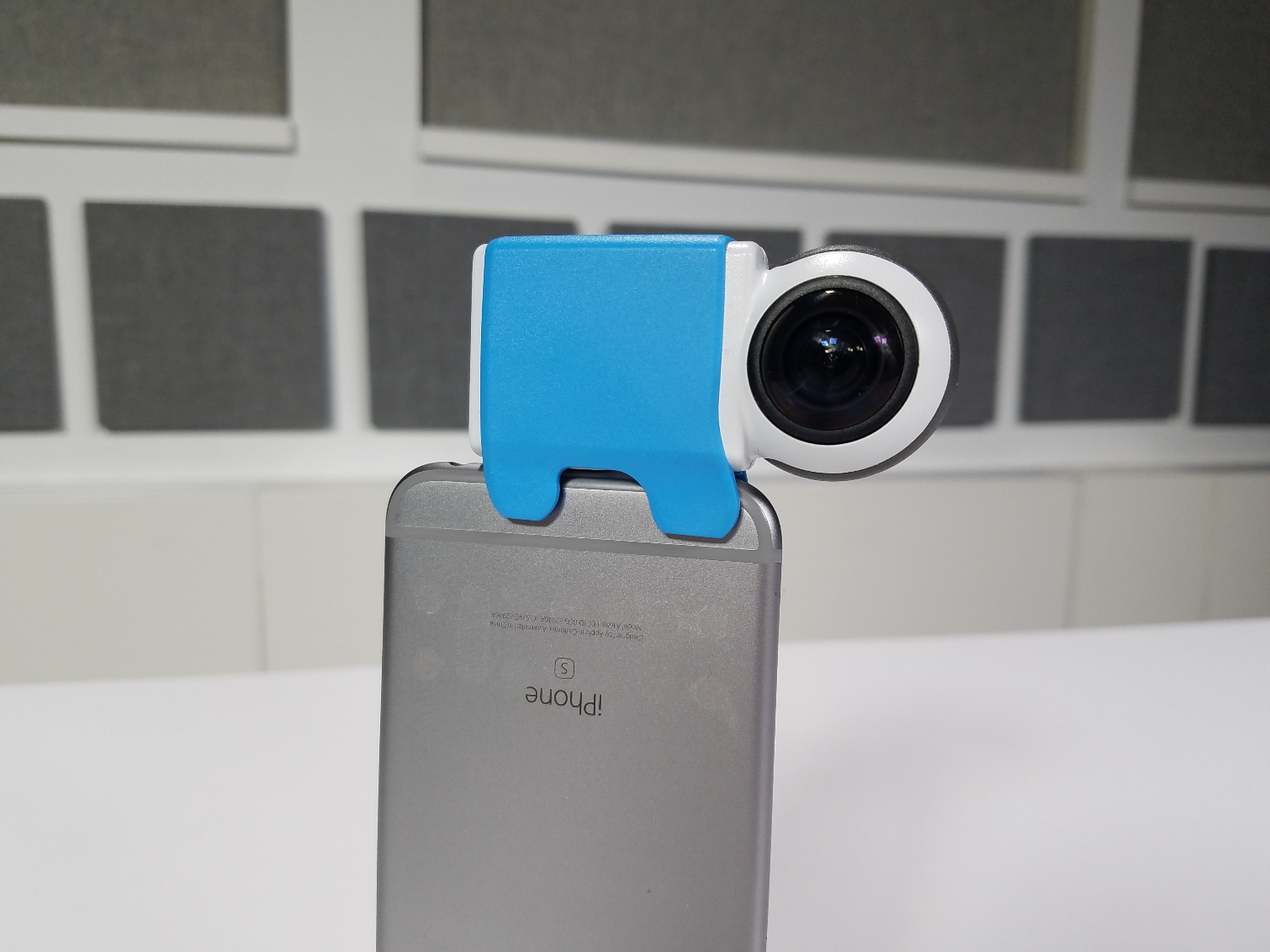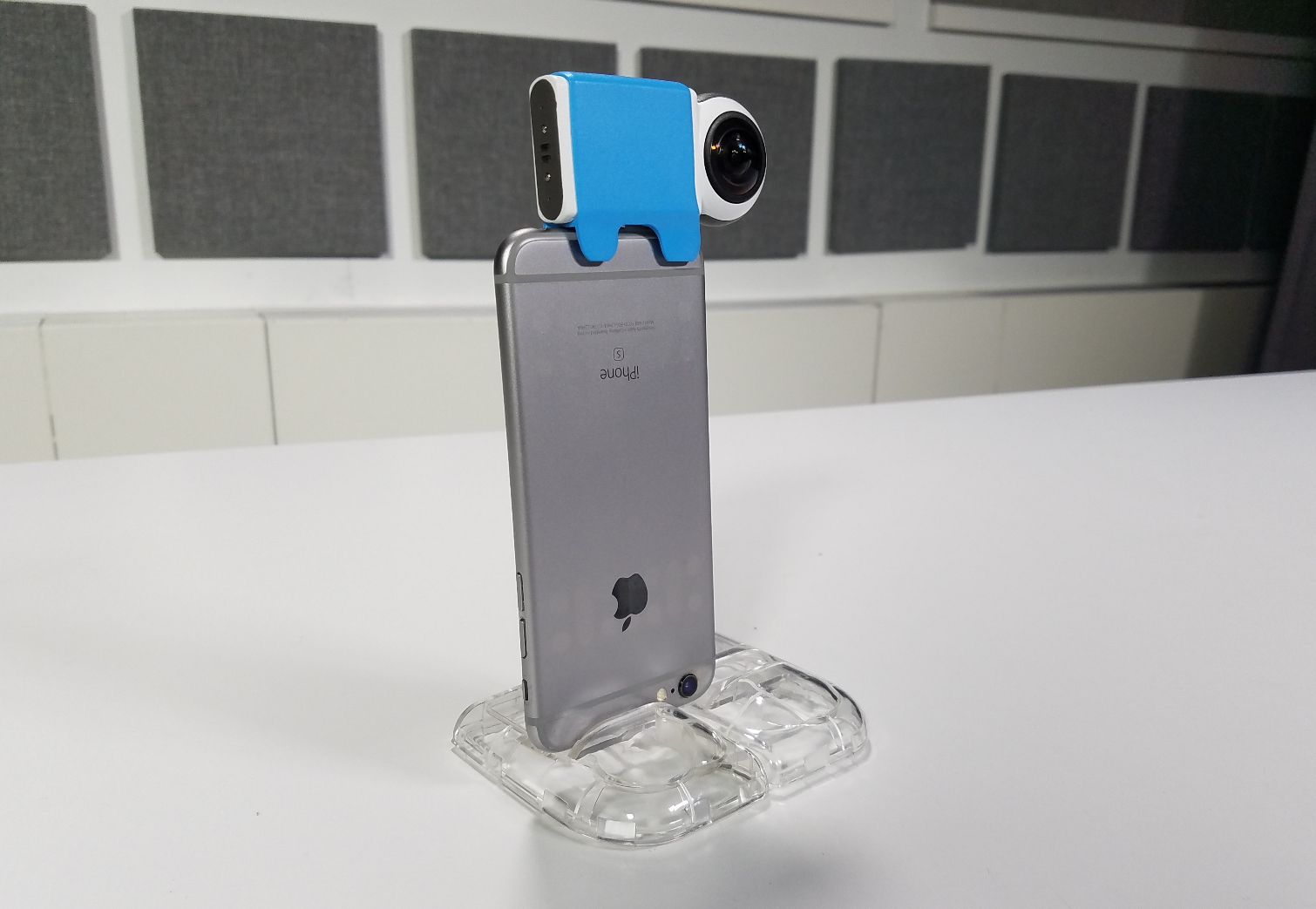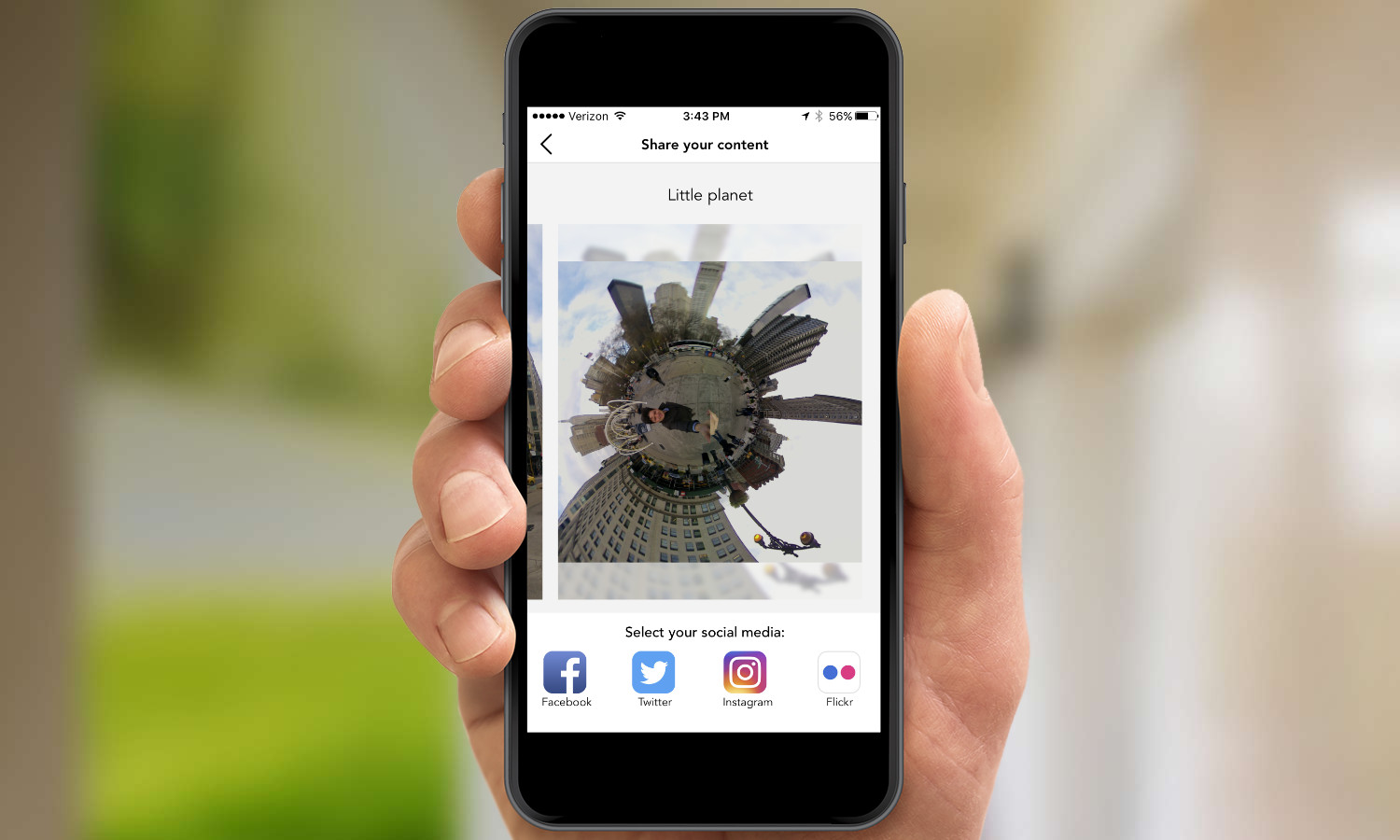Giroptic iO Is a Pricey But Capable 360 iPhone Camera
This camera clips on to your iPhone or iPad and lets you take 360-degree photos and videos.
The first generation of 360 cams were large standalone devices, but lately, a growing number of these all-seeing cameras are small enough to clip onto your smartphone. Like their bigger brethren, they let you take VR-ready photos and videos, and share them immediately to Facebook and YouTube.
Giroptic, one of the first companies on the market with a 360-degree camera, has put out a second version, the Giroptic iO, which attaches to an iPhone or iPad’s Lightning port. Available for preorder today for $249, this camera should ship by the first week in January. Giroptic lent me a sample to test out, and I’m impressed by a lot of what I saw, though I noticed a few limitations with this pricey camera.

MORE: Best 360-degree Cameras
The iO camera is much smaller than the original Giroptic camera; whereas the latter was the size (and shape) of a small pear, the iO is about the size of a Tic-Tac container with a ping pong ball attached to one end.
On one side of the Giroptic iO is a microUSB port (for charging) and an Apple Lightning connector; unfortunately, this camera only works with iPhones.
While it has a built-in battery, the iO camera can’t be used as a standalone device; you have to plug it into your iPhone for it to work. This is a bit of a bummer, especially since you can’t use the iO camera once its battery (good for about 1 hour and 15 minutes) runs out. The Insta360 Nano also has a built-in battery, but that camera can be used independently of your iPhone, a big plus.
The Giroptic iO also comes with a small clear plastic carrying case, which folds flat, and has two grooves, so that it can act as a stand for your iPhone or iPad.

Like the Insta360 Nano and the LyfieEye cameras, when you plug the Giroptic iO camera into your iPhone, you then have to turn your phone upside-down. It’s an imperfect solution, and one that’s going to keep more consumers from buying these cameras.
The Giroptic iO camera takes photos at a resolution of 4K (3840 x 1920), which is higher than the LG360 (2560 x 1280) and the Insta360 Nano (3040 x 1520).
But resolution isn’t everything. Fortunately, Giroptic’s iO cam delivers. Details and lighting were pretty good. In an outdoor photo taken near Madison Square Park, the iO camera did a solid job balancing both light and dark areas. The only issues I saw involved a bit of fuzziness where the two images were stitched; the Met Life Insurance building was a little blurry. Also, the bottom of all of the photos I took—where your hand is—has an odd splice.
An indoor shot came out pretty well, too, though the camera had trouble compensating for the overhead lights, which washed out some areas in the background, and made areas look paler than they should. Still, the iO was able to capture the vibrancy of a basket of tomatoes.
Still, there are some limitations: In this outdoor shot at a night market, the camera had trouble resolving both the light and the dark areas, and if someone wasn't standing still, they were blurry.
From Giroptic’s app (which was in beta when I tested it), you can upload images to Facebook, Instagram, Twitter, and Flickr. Additionally, you’ll be able to livestream to YouTube or to a custom server, which is something new. Within the app, you can change the perspective of photos to Flat, Little Planet, or Spherical. There’s also an option to let you view your images in a VR headset. The app also has an “Explore” section, which lets you view 360 photos taken by other Giroptic users, making this camera an inexpensive way to travel the world.

At $249, the Giroptic iO camera is about $50 more than similar smartphone-attachment 360 cameras. For that premium, I wish that you could use it as a standalone device, but in all, it’s a good second-generation 360-degree camera.
Sign up to get the BEST of Tom's Guide direct to your inbox.
Get instant access to breaking news, the hottest reviews, great deals and helpful tips.

Michael A. Prospero is the U.S. Editor-in-Chief for Tom’s Guide. He oversees all evergreen content and oversees the Homes, Smart Home, and Fitness/Wearables categories for the site. In his spare time, he also tests out the latest drones, electric scooters, and smart home gadgets, such as video doorbells. Before his tenure at Tom's Guide, he was the Reviews Editor for Laptop Magazine, a reporter at Fast Company, the Times of Trenton, and, many eons back, an intern at George magazine. He received his undergraduate degree from Boston College, where he worked on the campus newspaper The Heights, and then attended the Columbia University school of Journalism. When he’s not testing out the latest running watch, electric scooter, or skiing or training for a marathon, he’s probably using the latest sous vide machine, smoker, or pizza oven, to the delight — or chagrin — of his family.
